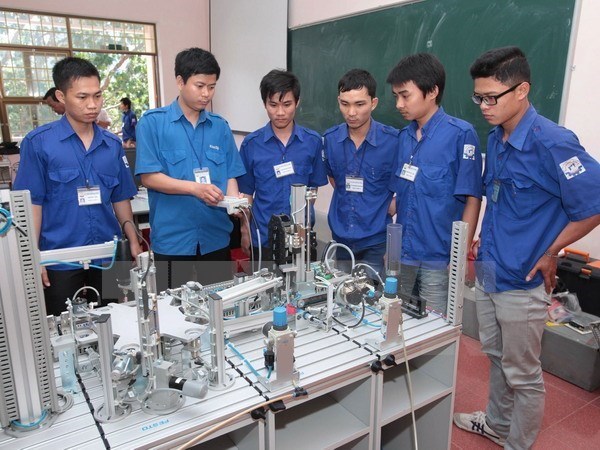MoLISA proposes adding regulations to support low-income individuals
Society – Economy - Ngày đăng : 08:25, 20/11/2024
 |
| Workers are given vocational trainings at Sóc Trăng Province. VNA/VNS Photo |
HÀ NỘI — The Ministry of Labour, Invalids and Social Affairs (MoLISA) has proposed adding specific criteria to define low-income individuals as part of efforts to address challenges in implementing poverty reduction policies.
This move is intended to streamline support measures, particularly vocational training, for individuals struggling to stabilise their livelihoods.
The MoLISA is currently gathering feedback to finalise a draft decree amending and supplementing several provisions of the Government’s Decree No 07/2021/NĐ-CP, issued on January 27, 2024, which defines the multidimensional poverty standards for the 2021-2025 period.
Among the proposals, MoLISA suggested adding criteria to identify low-income workers under the National Target Programme for Sustainable Poverty Reduction for 2021-2025. This will serve as a basis for local authorities to review and implement vocational training support for these individuals using programme funds.
Under the National Target Programme for Sustainable Poverty Reduction for 2021-2025, low-income workers are identified as a group eligible for vocational training support. However, the lack of specific guidelines on identifying these workers has left 48 localities unable to implement vocational training support, despite receiving allocated programme funds.
Reports from 73 ministries, sectors and localities indicated that as of the end of this June, approximately 167,980 workers from poor households, near-poor households and newly-out-of-poverty households, have received vocational skills training.
However, low-income workers remain unsupported due to the absence of clear criteria.
With just over a year remaining for the implementation of the National Target Programme for Sustainable Poverty Reduction for the period of 2021-2025, the MoLISA proposed defining low-income workers as those with an average per capita income of VNĐ2.25 million (US$88.57) per month or less in rural areas, equivalent to 53.96 per cent of the rural average and VNĐ3 million ($118) per month or less in urban areas, equivalent to 47.92 per cent of the urban average.
According to the General Statistics Office’s 2023 survey on living standards, the average monthly per capita income was VNĐ4.17 million ($164) in rural areas and VNĐ6.26 million ($246) in urban areas. The proposed income thresholds for low-income workers represent only 48-54 per cent of the 2023 average per capita income.
The MoLISA estimated that there are over 3.4 million individuals in rural and urban areas with an average monthly income below the proposed thresholds who are not classified as poor or near-poor households and have not undergone vocational training.
The draft specified that these criteria will only apply within the scope of the National Target Programme for Sustainable Poverty Reduction for the 2021-2025 period.
Feedback on the draft decree will be accepted until January 13, 2025. — VNS
